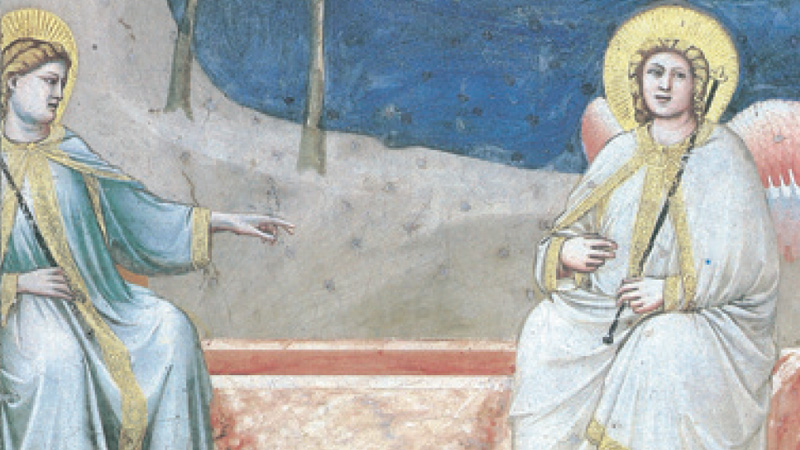The big words of those who prophesise a Church without God and without faith are pronounced in vain. We do not need a Church that celebrates the worship of action in political «prayers». It is absolutely superfluous and that is why it shall disappear on its own. The Church of Christ will remain –the Church that believes in the God who became man and who grants us life beyond death.
Nearly fifty years ago, and almost a decade before being named bishop by Paul VI, the then priest and theology professor in Tübingen and later in Regensburg, Dr. Joseph Ratzinger, broadcasted a series of lectures in a radio show in his country. The publishing company Kösel-Verlag from Munich compiled them in 1970 in a five-chapter book called “Glaube und Zukunft.” Now humanitas reproduces the fifth broadcast which is of great interest in the life of the Church in our millenium and which has proved highly current for our days.
Professor Ratzinger’s radio addresses from 1969
The theologian is no soothsayer; nor is he a futurologist, who makes a calculation of the future based on the measurable factors of the present. His profession very largely withdraws from calculation. Only very slightly, therefore, might it become concerned with futurology, which itself is no soothsaying; rather, it ascertains what is calculable and has to leave the incalculable an open question. Because faith and the Church reach down into those depths from which creative newness, the unexpected and the unplanned, are constantly coming forth, their future remains hidden to us, even in an age futurology. When Pius XII died, who could have foreseen the Second Vatican Council or the postconciliar development? Or who would have dared to foretell the First Vatican Council when Pius VI, abducted by the troops of the young French Republic, died a prisoner in Valence in 1799? Three years earlier one of the directors of the Republic had written: “This old idol will be destroyed. This is what freedom and philosophy desire. . . . It is to be hoped that Pius VI will live two years longer to give philosophy time to complete its work and leave this lama of Europe without a successor.1” Things were in such a bad way that funeral orations were delivered on the papacy, which people were forced to regard as extinguished forever.
Let us, therefore, be cautious in our prognostications. What Saint Augustine said is still true: Man is an abyss; what will rise out of these depths, no one can see in advance. And whoever believes that the Church is not only determined by the abyss that is man, but reaches down into the greater, infinite abyss that is God will be the first to hesitate with his predictions, for this naive desire to know for sure could only be the announcement of his own historical ineptitude. Does the title of this chapter have any meaning in that case? It has, provided we bear our limitations well in mind. It is precisely in times of vehement historical upheaval, when all the past seems to dissolve and completely new things seem to emerge, that men need to reflect upon history, which enables them to see the unreal exaggeration the moment in the right perspective and integrates them again into a happening that never repeats itself but, on the other hand, never loses its unity and its context. You might say: “Have we heard correctly; reflection upon history? That means looking back into the past, and we were expecting a glimpse into the future.” You have heard correctly; but I maintain that reflection upon history, properly understood, embraces both looking back into the past and, with that as the starting point, reflecting on the possibilities and tasks of the future, which can only become clear if we survey a fairly long stretch of the road and do not naively shut ourselves up in the present. Looking back into the past does not yield a prediction of the future, but it limits our illusion complete uniqueness and shows us that while exactly the same did not happen before, something very similar did. The dissimilarity between then and now is the reason for the uncertainty of our statements and for the newness of our tasks; the similarity is the basis for orientation and correction.
The period in the past that bears the greatest resemblance to the present situation in the Church is, first, that of so-called Modernism about the turn of the century and, then, the end of the rococo period, which marked the decisive emergence of the modern period, with the Enlightenment and the French Revolution. The crisis of Modernism never really came to a head, but it was interrupted by the measure taken by Pius X and by the change in the intellectual situation after the First World War. The crisis of the present When Pius XII died, who could have foreseen the Second Vatican Council or the postconciliar development? —Portrait of Pius XII— H34 is but the long-deferred resumption of what began in those days. The analogy of the history of the Church and of theology in the period of the Enlightenment remains with us, therefore. Whoever looks more closely will be amazed at the extent of the similarity between then and now. Today the Enlightenment as a historical epoch does not enjoy a very high reputation; even those who resolutely follow the trail of the things of that period do not want to be known as the “Enlightened” but keep their distance from that category and gravitate to the simple rationalism of the period, insofar as they take the trouble to mention historical events at all. And here we find our first analogy in the resolute rejection of history, which is counted as no more than the storeroom of yesterday—of no use at all to the utterly new today. We find a triumphant certainty that it is no longer tradition but rationality that governs action; the key words are “rational”, “intelligible”, and so on. In all of these things, the Enlightenment is astonishingly like the present day. But perhaps even before mentioning these facts, which seem to me to be negative, one ought to take a look at the characteristic mixture of one-sidedness and positive beginnings that link the Enlightened of then and now and that cause the present to appear not so utterly new after all and not so exempt from all historical comparison.
The Enlightenment had its liturgical movement, the aim of which was to simplify the liturgy and restore it to its original basic structure. Excesses in the cult of relics and of saints were to be removed, and, above all, the vernacular, with congregational singing and participation, was to be introduced. The Enlightenment witnessed also an episcopal movement that wanted to stress the importance of the bishops over against the one-sided centralization of Rome. This movement had democratic elements, as when Wessenberg, the vicar general of Constance, demanded the setting up of provincial synods. Reading his works, one imagines one is reading a progressive of the year 1969. The abolition of celibacy was demanded; the sacraments were to be administered only in the vernacular; and no promises were to be required concerning the religious education the children a mixed marriage, and so on. That Wessenberg wanted to see regular preaching, a raising the standard of religious education, and encouragement of biblical studies proves once again that these men were by no means moved merely by a reckless rationalism. Nonetheless, we are left with the impression of an ambivalent figure, because in the last analysis, only the garden shears of constructive reason are at work, capable of producing many good things, but insufficient if they are the only tool at our disposal2. We receive the same impression of ambivalence when we read the proceedings of the synod of Pistoia, a council attended during the Enlightenment by 234 bishops in 1786 in northern Italy. This synod tried to translate the reforming ideas of that period into realities in the Church, but it came to grief on the mixture of genuine reform with naive rationalism. Once again one thinks that one is reading a postconciliar book when one comes across the assertion that a spiritual ministry is not directly ordained by Christ but merely comes forth out of the life of the Church, which itself is uniformly priestly, or when one reads that a celebration of the Mass without Holy Communion makes no sense, or when the primacy of the papacy is described as purely functional, or, conversely, the divine right of the episcopal office is stressed3. It is true that a great many of the propositions of Pistoia were condemned by Pius VI in 1794. The one-sidedness of this synod had discredited even its good ideas.
The most successful way to discover the embryo of the future in any particular epoch is to examine personalities and the signs of the times that they represent. Obviously, we can pick out only one or two characteristic personalities who embody the whole scope of the potential of that period and also manifest its astonishing analogy with the present. There were the extreme progressives, represented by, say, the melancholy figure of Gobel, the archbishop of Paris, who bravely went along with every step of progress in his own time. First he supported the idea of a constitutional national Church; then, when this was no longer enough, he abandoned his priesthood, declaring that since the happy outcome of the Revolution, no national religion was needed other than that of liberty and equality. He took part in the worship of the Goddess Reason in Notre Dame; but in the end, progress ran on ahead even of him. Under Robespierre, atheism was once again accounted a crime, and so the one-time bishop was led as an atheist to the guillotine and executed 4.
In Germany the scene was quieter. We might mention Matthias Fingerlos, then the director of the Georgianum in Munich. In his book What Are Priests For? he explained that the priest ought primarily to be a teacher of the people, teaching them agriculture, animal husbandry, horticulture, the use lightning conductors, and also music and art. Today we express this by saying that the priest ought to be a social worker, helping to build up an intelligent society, purified of all irrationalism5. Taking his place in the center—a moderate progressive, as it were—we would find Wessenberg, the vicar general of Constance, whom we have mentioned already and who certainly would not have agreed to the equation of faith with socialwork, but who, on the other hand, showed all too little liking for the organic, for the living thing, that fell outside the sheer constructions of reason. A totally different scale of values becomes evident when we encounter the somewhat later bishop of Ratisbon, Johann Michael Sailer. It is difficult to place him. The current categories of progressive and conservative do not fit him, as the external course of his life proves. In 1794, he lost his professorship at Dillingen on a charge of supporting the Enlightenment; as late as 1819, his nomination to the bishopric of Augsburg was turned down as a result, among other things, the opposition of Clemens Maria Hofbauer—later canonized—who saw Sailer still as a rationalist. On the other hand, in 1806, his pupil Zimmer was sent down from the university of Laudshut on a charge of being a reactionary. In Laudshut, Sailer and his circle were hated as opponents of the Enlightenment. The man whom Hofbauer regarded as a product of the Enlightenment was recognized by the true disciples of that movement as their most dangerous antagonist 6.
They were right. This man and the wide circle of his friends and disciples started a movement that embodied far more the future than did the triumphantly overbearing arrogance the sheer rationalists. Sailer was a man whose mind was open to all the problems of his time. The musty Jesuit scholasticism of Dillingen, into whose system reality could no longer be fitted, was bound to seem to him quite inadequate. Kant, Jacobi, Schelling, and Pestalozzi were his partners in dialogue. For him, faith was not tied to a system of propositions and could not be maintained by a flight into the irrational. It could survive only by entering into open discussion with the present. But this same Sailer had a profound grasp of the great theological and mystical tradition of the Middle Ages, uncommon in his time, because he did not confine man within the present moment but knew that if he is to become fully aware of himself, he must open his eyes reverently to the whole riches his history. Above all, he was a man who not only thought but lived. If he was on the trail of a theology of the heart, that was not on account of cheap sentimentality but because he knew about the wholeness man, who fulfills the unity of his being as the interpenetration of spirit and body, of the hidden springs of the mind and the clear vision of the intellect. Antoine de Saint-Exupéry once said: “One can see properly only with the heart.” If we compare the lifeless progressivism of Matthias Fingerlos with the richness and depth of Sailer, the truth of this saying becomes strikingly obvious. Only with the heart can one see properly. Sailer was a visionary because he had a heart. He was able to give birth to something new, something that was big with the future, because he lived by what was enduring and because he placed himself, his whole life, at its disposal. This brings us to the real point at last: only he who gives himself creates the future. The man who simply tries to instruct, who wants to change others, remains unfruitful.
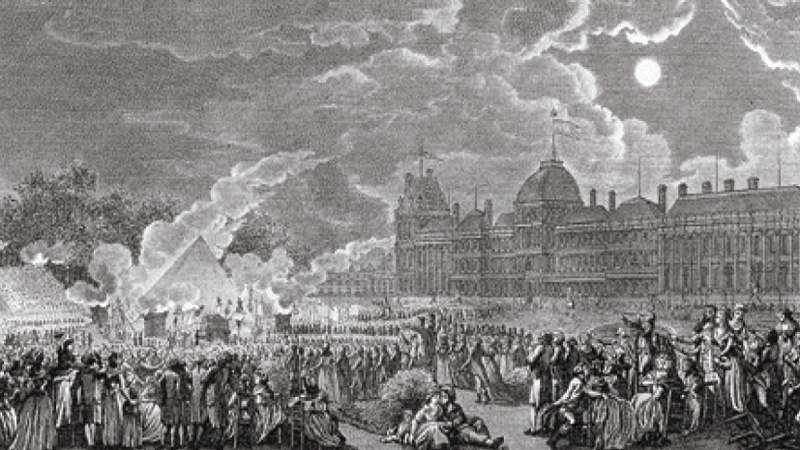
And now we come to the other man, who was an antagonist of both Sailer and of Wessenberg. This was Clemens Maria Hofbauer, the Bohemian baker’s apprentice who became a saint7. It is true that in many respects this man was narrow-minded, even a bit of a reactionary; but he was a man who loved, who placed himself at the disposal of mankind with an unstinting and unflagging passion. On the one hand, his circle included men like Schlegel, Brentano, and Eichendorff; on the other hand, he unreservedly took up the cause of the poorest and most abandoned, seeking nothing for himself, ready to suffer any ignominy if thereby he could help someone. Thus men were able to rediscover God through him, just as he had discovered men through God and knew that they required more than instruction in agriculture and animal husbandry. In the end, the faith of this poor baker’s apprentice proved to be more humane and more reasonable than the academic rationality of the mere Rationalists. And so the thing that outlived the ruins the declining eighteenth century and was reborn as the future was something very different from that which Gobel or Fingerlos had suspected. It was a Church, reduced in size, diminished in social prestige, but a Church that had become fruitful from a new interior power, which released new formative and social forces, manifested both in great lay movements and in the founding of numerous religious congregations, all of which are very much part and parcel of the Church’s most recent history.
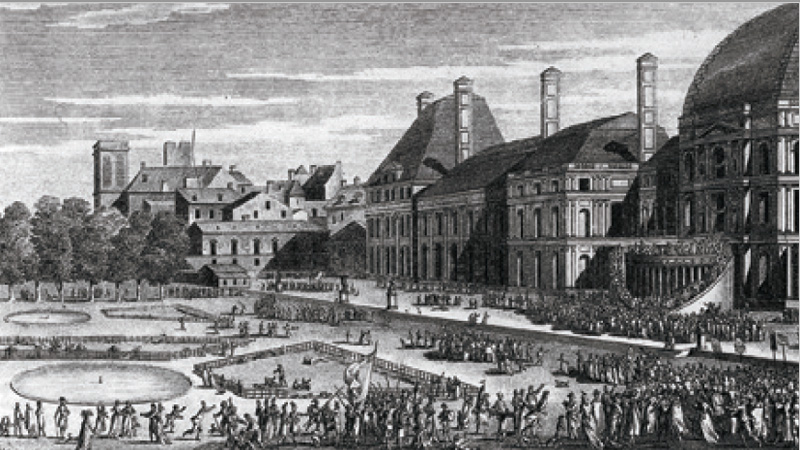
We have arrived, then, at the present day and find ourselves looking toward tomorrow. Today, likewise, the future of the Church can and will issue from those whose roots are deep and who live from the pure fullness of their faith. It will not issue from those who accommodate themselves merely to the passing moment or from those who merely criticize others and assume that they themselves are infallible measuring rods; nor will it issue from those who take the easier road, who sidestep the passion of faith, declaring false and obsolete, tyrannous and legalistic, all that makes demands upon men, that hurts them and compels them to sacrifice themselves. To put this more positively: the future of the Church, once again as always, will be reshaped by saints, by men, that is, whose minds probe deeper than the slogans of the day, who see more than others see, because their lives embrace a wider reality. Unselfishness, which makes men free, is attained only through the patience of small daily acts of self-denial. By this daily passion, which alone reveals to a man in how many ways he is enslaved by his own ego, by this daily passion and by it alone, a man’s eyes are slowly opened. He sees only to the extent that he has lived and suffered. If today we are scarcely able any longer to become aware of God, that is because we find it so easy to evade ourselves, to flee from the depths of our being by means of the narcotic of some pleasure or other. Thus our own interior depths remain closed to us. If it is true that a man can see only with his heart, then how blind we all are! 8
How does all of this affect the problem we are examining? It means that the big talk of those who prophesy a Church without God and without faith is all empty chatter. We have no need of a Church that celebrates the cult of action in political prayers. It is utterly superfluous. Therefore, it will destroy itself. What will remain is the Church of Jesus Christ, the Church that believes in the God who has become man and promises us life beyond death. The kind of priest who is no more than a social worker can be replaced by the psychotherapist and other specialists; but the priest who is no specialist, who does not stand on the sidelines, watching the game, giving official advice, but in the name of God places himself at the disposal men, who is beside them in their sorrows, in their joys, in their hope and in their fear, such a priest will certainly be needed in the future.
Let us go a step farther. In contrast to an earlier age, she will be seen much more as a voluntary society, entered only by free decision. As a small society, she will make much bigger demands on the initiative of her individual members. Undoubtedly she will discover new forms of ministry and will ordain to the priesthood approved Christians who pursue some profession. In many smaller congregations or in self-contained social groups, pastoral care will normally be provided in this fashion. Alongside this, the full-time ministry of the priesthood will be indispensable as formerly. But in all of the changes at which one might guess, the Church will find her essence afresh and with full conviction in that which was always at her center: faith in the triune God, in Jesus Christ, the Son of God made man, in the presence of the Spirit until the end of the world. In faith and prayer she will again recognize her true center and experience the sacraments again as the worship of God and not as a subject for liturgical scholarship.
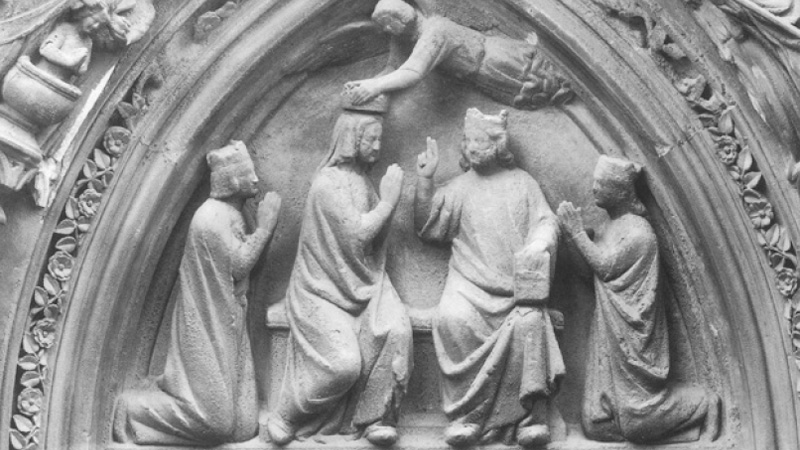
The Church will be a more spiritual Church, not presuming upon a political mandate, flirting as little with the Left as with the Right. It will be hard going for the Church, for the process of crystalization and clarification will cost her much valuable energy. It will make her poor and cause her to become the Church of the meek. The process will be all the more arduous, for sectarian narrow-mindedness as well as pompous self-will will have to be shed. One may predict that all of this will take time. The process will be long and wearisome as was the road from the false progressivism of the eve of the French Revolution— when a bishop might be thought smart if he made fun of dogmas and even insinuated that the existence of God was by no means certain9—to the renewal of the nineteenth century. But when the trial this sifting is past, a great power will flow from a more spiritualized and simplified Church. Men in a totally planned world will find themselves unspeakably lonely. If they have completely lost sight of God, they will feel the whole horror of their poverty. Then they will discover the little flock of believers as something wholly new. They will discover it as a hope that is meant for them, an answer for which they have always been searching in secret.
And so it seems certain to me that the Church is facing very hard times. The real crisis has scarcely begun. We will have to count on terrific upheavals. But I am equally certain about what will remain at the end: not the Church of the political cult, which is dead already with Gobel, but the Church of faith. She may well no longer be the dominant social power to the extent that she was until recently; but she will enjoy a fresh blossoming and be seen as man’s home, where he will find life and hope beyond death.

